#kangshi
Text

一之瀬アスナ by Kangshi [Twitter/X]
※Illustration shared with permission from the artist. If you like this artwork please support the artist by visiting the source.
417 notes
·
View notes
Photo

PATCHWORK CANOPY Sacred silk patchwork canopy (mounted), Kangshi dynesty, 113 x 103cm Tibet, c.1750.
13 notes
·
View notes
Text
Elegy for Chengdu
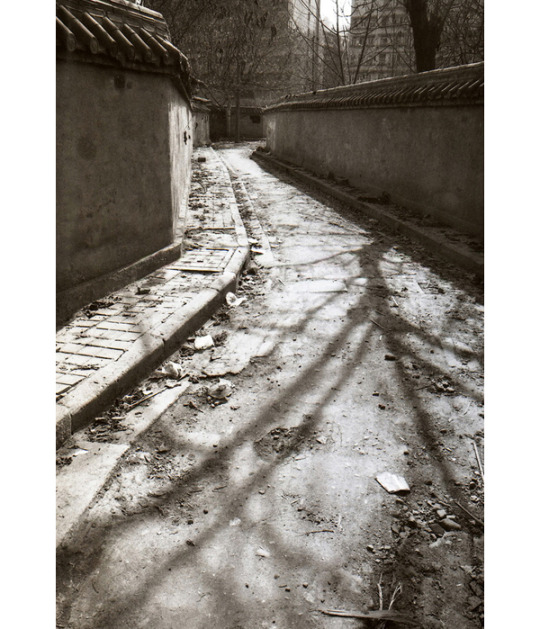
an alley in the Dacisi 大慈寺 area, Chengdu, 2006; photo by Roger Jones
Before I left Los Angeles to move to China in 2006, a work acquaintance who was interested in the country’s history told me, “You’d better go soon; China’s history has almost disappeared.”
Arriving in Chengdu, Sichuan, in the unbearably steamy summer, I nonetheless looked forward to my job teaching English at the university level. I soon realized, as I searched for traces of the city’s 2,300 year history, that the rush to modernization has virtually wiped out Chengdu’s architectural past. There are historic sites that remain, but they are mostly recreations, Disneyfied versions of China’s past for tourist consumption.
Amid the sterile, concrete monoliths that dominated central Chengdu, I was occasionally thrilled to discover small pockets of the past. Over the next several years, as ancient neighborhoods such as 水井坊 Shuijingfang and 大慈寺 Dacisi monastery disappeared under the bulldozer, I documented these areas with my camera. Both areas have now been transformed into upscale commercial and leisure zones, and are no doubt on most tourist itineraries.
大慈寺 Da Ci Si (Temple of Infinite Mercy) was once the largest monastery complex in Chengdu. Located near the downtown shopping area, its current buildings, mostly dating from the 19th or early 20th century, have been preserved. Some of the surrounding narrow lanes, in 2006, still maintained a hint of the past. However, beyond high construction walls lay nothing but the rubble of traditional buildings.

an early view of Dacisi monastery, which once housed up to 10,000 monks
While living in Chengdu I purchased a fascinating book of photographs by 周安 Zhou An, titled Chinese Folkways Memory of a City (see illustrations reproduced below). He had set out to document the everyday lives of the residents of the Dacisi area in traditional houses, with much of their activity taking place in the street or lane. The result was a book that showed “…the myriad cultural activities that take place on the streets in ancient Chengdu…. streets were the primary work and leisure places for civilians.”[1]
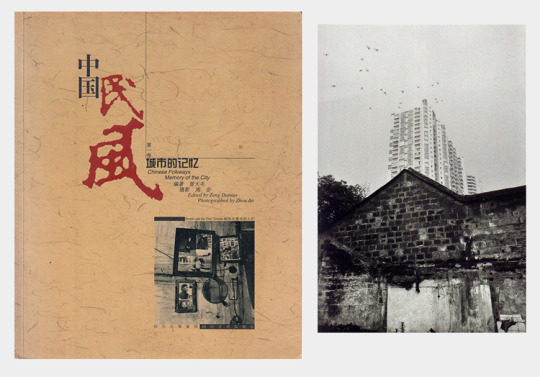
Chinese Folkways Memory of a City
城市的 记忆
Edited by 曾大毛 Zeng Damao
Photographed by 周安 Zhou An
出版社:四川美术出版社 Chengdu, Sichuan, 2006

Dacisi 大慈寺, Chengdu, Sichuan. Photograph by 周安 Zhou An, Chinese Folkways Memory of a City
Here is a selection of photographs taken by 周安 Zhou An in the Dacisi area, scanned from the book pictured above. The photos document the daily life of the area before the residents were moved out, and the district was turned into a tourist shopping and leisure zone.


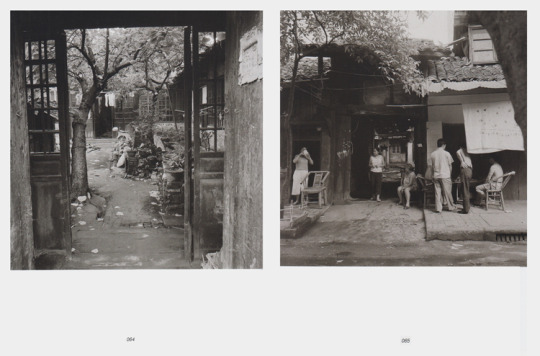



The book documents a way of life in China that has all but disappeared in large cities: a life lived low to the ground, filled with street activity, in close relationship with neighbors. It was a life replaced with market-rate housing, huge clusters of concrete apartment blocks accommodating a mass influx of people to the cities, and tourist-oriented shopping and leisure zones. “Urbanization, economic development and growing tourism are major factors fueling the transition of commercialized historic zones. However, under different initiative and preservation methods, the integrity of conserved heritages varies.” [2]
The Preface to Chinese Folkways Memory of a City outlines the clearing out of the residential area:
In June 2002, the resettlement and rehabilitation project was launched in Daci Temple area. Except those newly built and ancient building, those old houses around Daci Temple, which are of area over 250mu, would be demolished. And 25 blocks, including 4,000 houeholds and 10,000 residents, would be involved, i.e. Shamao Street, Qingyun Street, Xizigong Street, East Kangshi Street, Shuyuan Street, Est Shuncheng Street (south section) and Tianxianqiao Street, etc. The area for rehabilitation totaled up to 230,000 square meters. The Daci area would preserve its ancient architectural ensemble and build Chinese-featured low-rise architectural complex, which form the architectural style in the styles of Ming and Qing dynasties and make the area a traditional pedestrian focus of culture and commerce.
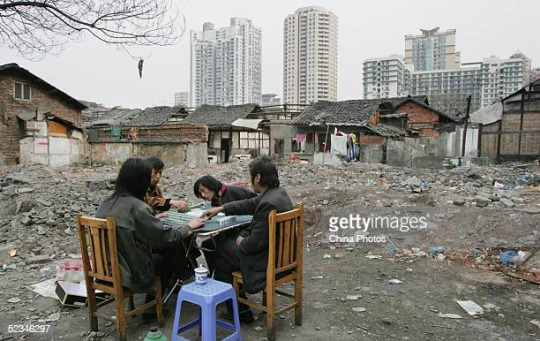
CHENGDU, CHINA - MARCH 6: (CHINA OUT) Chinese people play mahjong at a demolition site in Dacisi Area on March 6, 2005 in Chengdu of Sichuan Province, China. The Dacisi Area is an old residential zone with a lot of historic buildings dating hundreds of years back. According to the government, they are demolishing shabby houses to transform Dacisi into economic and technological development area. (Photo by China Photos/Getty Images)

Here is what has replaced the historic and once vibrant neighborhood around Dacisi: a shopping and leisure district called Taikoo Li:
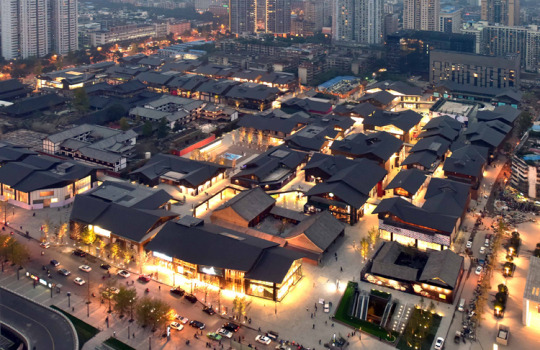


Sino-Ocean Taikoo Li Chengdu promotional brochure [click here to see brochure in PDF]

Site plan of Taikoo Li with preserved historic structures (see legend); the Dacisi monastery complex and six other buildings from the ancient area were retained. [click here to view larger size]

the preserved historic structures incorporated into the Taikoo Li complex [click here to view larger size]; preceding images are from the Taikoo Li promotional brochure linked above.

The core buildings of Dacisi monastery were preserved (see diagram above), along with six early 20th-century (late Qing dynasty) structures nearby. However, the atmosphere of a real neighborhood where people lived is gone; the "Chinese traditional style" commercial buildings create a pleasant atmosphere, but have nothing to do with Chengdu's past.
There's a term for such developments that replace China's actual history with fake or imagined history: fanggu. Describing Kuan Zhai Xiang Zi (Wide and Narrow Lanes), a prime tourist destination in Chengdu:
“It’s all counterfeit—it’s fake,” said Zhang Xianjin, a retired professor of architecture, when I met him at a nearby teahouse .... “It has no historical value...” The Wide and Narrow Lanes were a typical example of fanggu, he said, a term that literally means “imitating the old,” but has become synonymous with the fakery of historical buildings. Throughout the country, fanggu has been China’s answer to its own destructive past. With few actual relics or old buildings left to preserve, the government has instead chosen to rebuild them as they might have looked in their prime.
Beam, Christopher, “Chengdu, China Gets a Modern Makeover,” Travel + Leisure, November 10, 2015
https://www.travelandleisure.com/trip-ideas/chengdu-china-modern-makeover

Much of the Dacisi area had already been leveled before I arrived in Chengdu in 2006.[3] I took many photographs over the next several years, as what little traditional street life remained was slowly pushed aside. Here is a selection of my photographs:
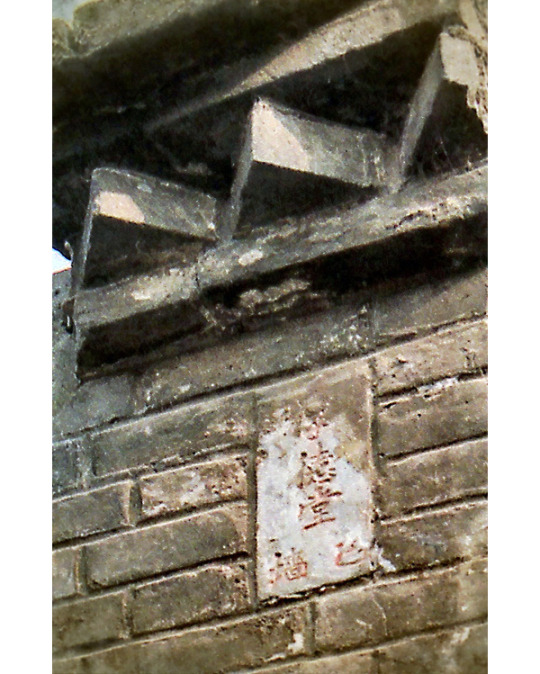
portion of an old wall with an inscribed brick
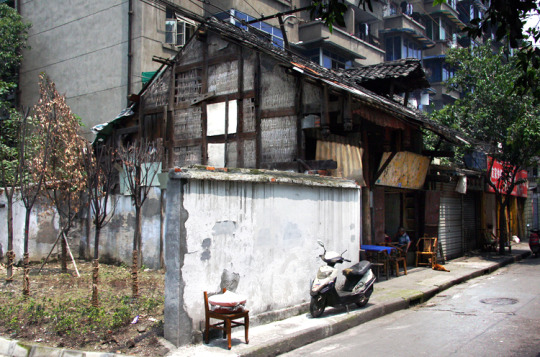
a traditional "basket weave" building in 马家巷 Majia Alley; the outer wall surface between the wood joists would have been plastered over.

looking through a broken wall, Dacisi
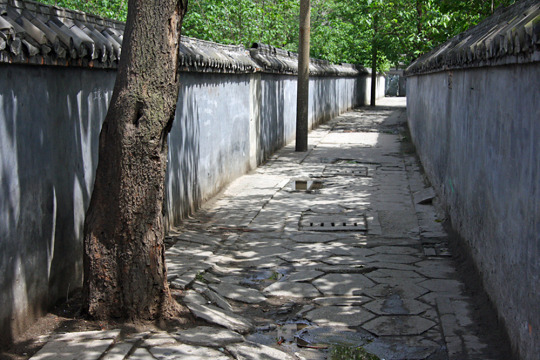
peaceful alley; this was one of my favorite spots in Chengdu; the walls actually surrounded already-demolished areas

another wall, with detail of the clay tile ornament at the top
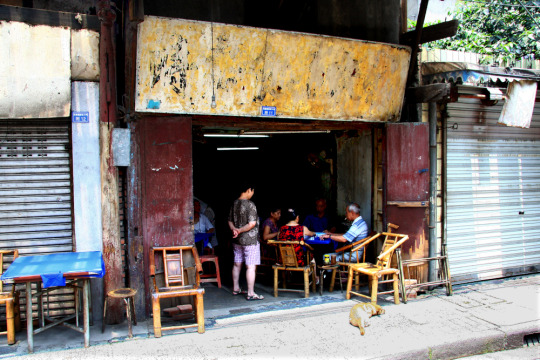
mahjong game, 马家巷 Majia Alley

the building called "Majiaxiang Ashram"

the building called "Majiaxiang Ashram"

the two buildings at 7 and 8 Zhanghuali Lane are now a high-end spa and tea house
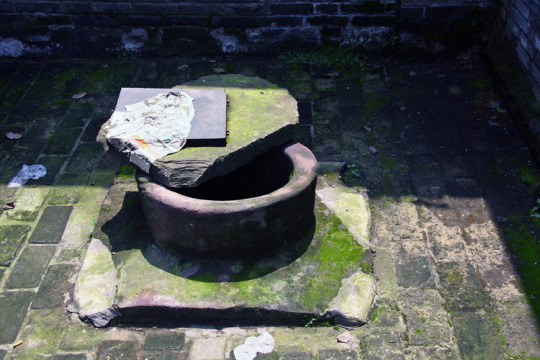
old well, Dacisi residential area

what remains: pottery shards

carved details
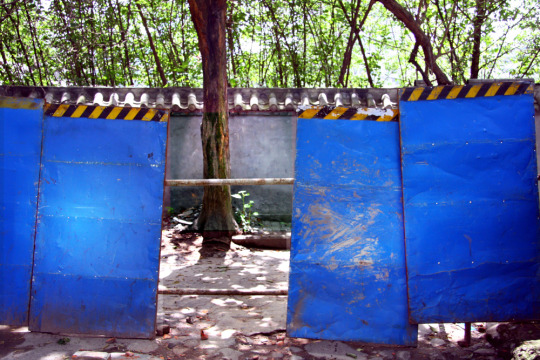
barriers

the historic wall and gateway of an old scribes’ office, the Bitieshi Building
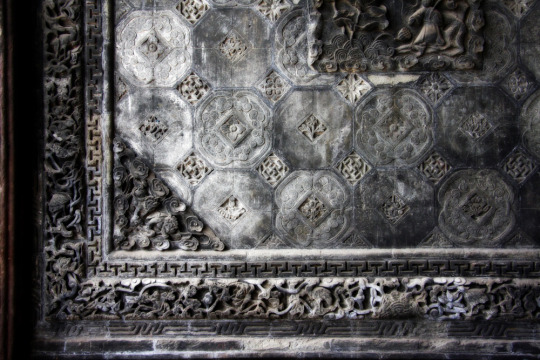
detail of tile wall decoration, Guangdong Guild Hall

Zen Tea House inside Dacisi

detail of a courtyard inside one of the preserved historic buildings

5000 years of culture is a term used often here to describe the confusion that often arises when West meets East on the Mainland, but 50 years of destruction is a term not often heard….The damage done to Han culture, the culture supposedly representing the vast majority of Mainland Chinese over the past few decades is immeasurable.
But Old Chengdu is virtually dead. The last remnants of what once a cultural capital are locked in a battle for their lives with the local government, who is more interested in a candy-coated refurbishing of the area than in the 1000 years of culture and history the neighborhood represents. And while the old city is under siege and rampant construction and development turns the city’s waterways into cesspools, the Chengdu Government wanders around in a dreamland.
The old parts of any large city in China are going or gone…. If one were to take photos of the skylines of Shenzhen, Taiyuan and Chengdu, there would be no discernible difference. And there would be no old city to offset the sterility.
Matuszak, Sascha, “The 50-Year Communist Assault on 5000 Years of Chinese Culture,” AntiWar.com https://original.antiwar.com/sascha-matuszak/2004/02/28/the-50-year-communist-assault-on-5000-years-of-chinese-culture/
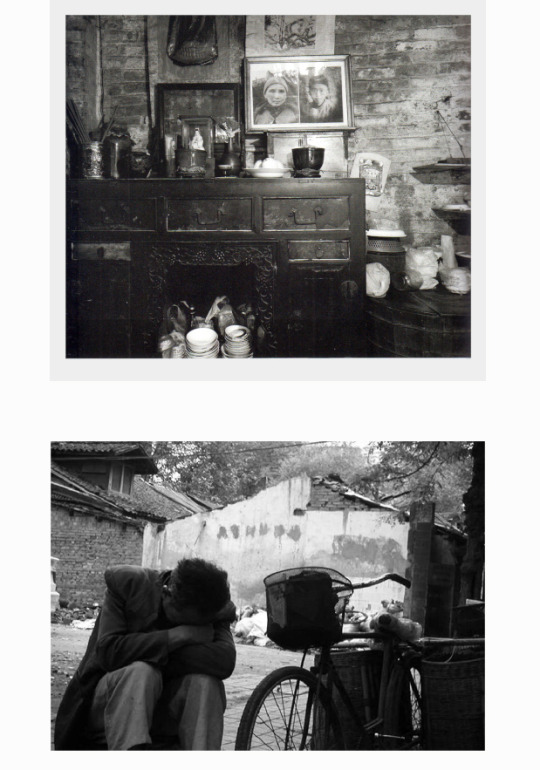
le vieux Chengdu n'est plus---xiaomifeng on Flickr

NOTES:
[1] Yang, Qianran, Success and Failure of Historic Preservation: The Cases of Chengdu, Kawagoe, and Williamsburg, senior thesis. (Brandeis University, 2016).
Yang continues, "while the visitors may be impressed by China’s modernization and rapid economic growth, they are disappointed by the missing distinctiveness of its Eastern culture" (both citations p. 4). Speaking of the Chengdu government's transformation of authentic historic areas by "degrading them into gimmicks for commerce," Yang goes on to contrast today's tourist areas in the city with the neighborhoods' original functions:
[2] Same source, p. 4.
Located in a subtropical region, this city has a climate characterized by fairly mild winters and humid summers, [and such] conditions fostered a unique street culture. In the book Street Culture in Chengdu, the author Di Wong emphasizes a combination of physical structures that lined the streets and the myriad cultural activities that take place on the streets in ancient Chengdu…. streets were the primary work and leisure places for civilians. Ordinary residents would formerly hold all sorts of communal activities on these open, easily accessible streets, which granted freedom and interaction to the public. To the performers of folk arts, the street was their stage; to hawkers, the street was their market; to children, the street was their playground; to people of Chengdu, the street was the place where they grew up.
Yang, p. 18
[3]
Most old houses in historic districts were with bad quality and lack of infrastructure, and with the time passing by, the residents in historic districts were often not the owners. This complex ownership and poor living quality made the inhabitants build new structures to accommodate demands of new generations without order. Those reasons made fire protection become a risk, and the deficiency of infrastructure become a problem.
However, this has usually been a top-down process, without participation of local residents:
As the need for local government to get profit from historic district or other cultural carriers, the regeneration is usually in a commercial way. It sometimes makes historic districts lose their own character. Furthermore, it may ignore genius loci and historical significance.
Yin, Hsiaoting, Tsinghua University, China, "Trends of Preserving Historic Districts," 48th ISOCARP Congress 2012: Issues in the Trends and Methods of Preserving Historic Districts in Today’s China: Case Study of Three Cities.
2 notes
·
View notes
Photo

Jo Se-ho, cute baby Kangshi transform 'visual to keep with a negative'
Source: k-star-holic.blogspot.com
0 notes
Text
Trash and Swords | thislifemyday poetry
• Trash and Swords •
TAC-DEF ki kangshi ghari
TAC-DEF ki kangshi ghari
Our garbage truck jingle.
“Dustbin is here!” Someone would shout,
and the usual chaos would ensue.
Up and down, in and out,
get that dustbin, get that box.
Chaos brought by the time-bound truck.
Time-bound, time-bound,
I’ve heard that somewhere;
yes, in my classroom back in the city,
ma’am saying how this planet’s dying.
View On WordPress
0 notes
Text

宝鐘マリン by Kangshi [Twitter/X]
※Illustration shared with permission from the artist. If you like this artwork please support the artist by visiting the source.
289 notes
·
View notes
Text

鹿山レイジョ by Kangshi [Twitter/X]
※Illustration shared with permission from the artist. If you like this artwork please support the artist by visiting the source.
311 notes
·
View notes
Text

羽川ハスミ by Kangshi [Twitter/X]
※Illustration shared with permission from the artist. If you like this artwork please support the artist by visiting the source.
177 notes
·
View notes
Text

申谷カイ by Kangshi [Twitter/X]
※Illustration shared with permission from the artist. If you like this artwork please support the artist by visiting the source.
140 notes
·
View notes
Text

シロコ by Kangshi [Twitter/X]
※Illustration shared with permission from the artist. If you like this artwork please support the artist by visiting the source.
141 notes
·
View notes
Text

ルリナ by Kangshi [Twitter/X]
※Illustration shared with permission from the artist. If you like this artwork please support the artist by visiting the source.
159 notes
·
View notes
Text

静山マシロ by Kangshi [Twitter/X]
※Illustration shared with permission from the artist. If you like this artwork please support the artist by visiting the source.
143 notes
·
View notes
Text

杏山カズサ by Kangshi [Twitter/X]
※Illustration shared with permission from the artist. If you like this artwork please support the artist by visiting the source.
203 notes
·
View notes
Text

フォーミダブル by Kangshi [Twitter/X]
※Illustration shared with permission from the artist. If you like this artwork please support the artist by visiting the source.
142 notes
·
View notes
Text

久田イズナ by Kangshi [Twitter/X]
※Illustration shared with permission from the artist. If you like this artwork please support the artist by visiting the source.
101 notes
·
View notes